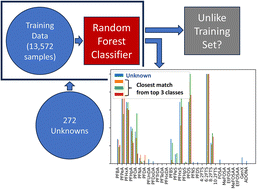Environ. Sci.: Adv., 2024, 3,366-382
DOI: 10.1039/D3VA00266G, Paper
DOI: 10.1039/D3VA00266G, Paper
 Open Access
Open Access This article is licensed under a Creative Commons Attribution 3.0 Unported Licence.
This article is licensed under a Creative Commons Attribution 3.0 Unported Licence.Tohren C. G. Kibbey, Denis M. O'Carroll, Andrew Safulko, Greg Coyle
A multi-class method was developed to identify PFAS origin based on chemical composition, and performance of the method was evaluated in a blinded test against unknowns. The method showed great promise in its ability to recognize sample origin.
The content of this RSS Feed (c) The Royal Society of Chemistry
A multi-class method was developed to identify PFAS origin based on chemical composition, and performance of the method was evaluated in a blinded test against unknowns. The method showed great promise in its ability to recognize sample origin.
The content of this RSS Feed (c) The Royal Society of Chemistry

